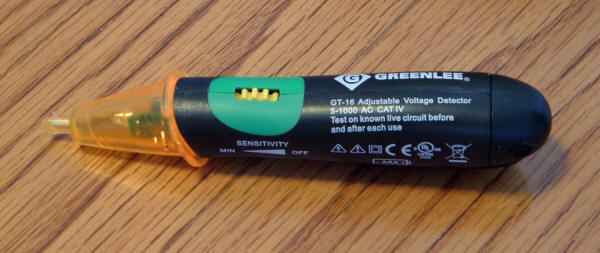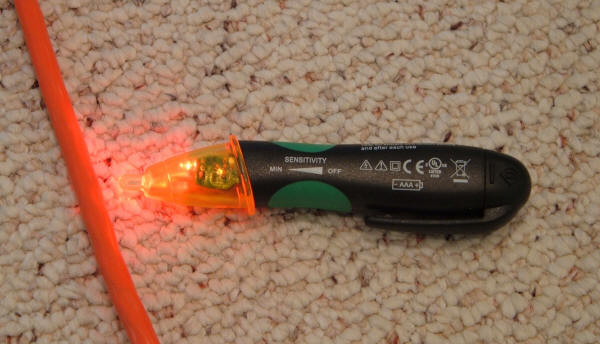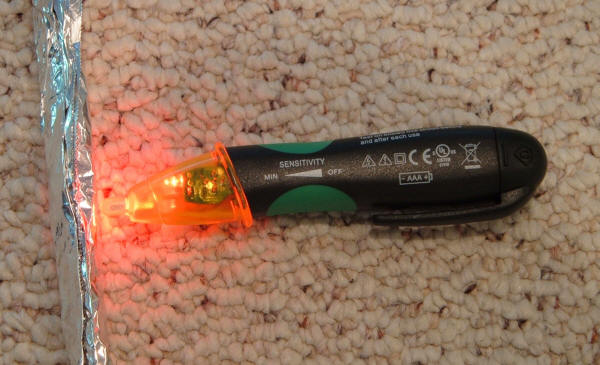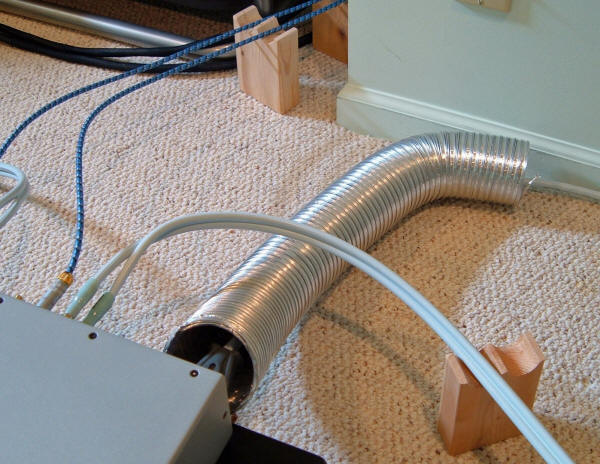|
You are reading the older HTML site
Positive Feedback
ISSUE
50
A Must Own AC Power Accessory
I recently received a pair of Supra's Lo-Rad power cords for review. Lo-Rad stands for "Low Radiation." Supra demonstrates on Page 7 their 2009 catalog how to verify the low noise radiation properties of its power cables by using an inexpensive AC voltage sensor. If the sensor detects an AC voltage within a cable, that cable is also radiating noise. If a cable is properly shielded and/or has noise limiting internal geometry, however, no noise radiation can escape and the sensor will not react. Check the catalog information here. (Jenving link http://www.jenving.se/pdf/SUPRA_Catalogue_2009_eng_14mb.pdf) For audio purposes, these sensors are ideal for confirming how well shielded your power cables are as well as identifying sources of AC noise coming from unshielded cables, equipment chassis, and other sources of noise radiation within your listening room. How cool is that? Supra sells an AC voltage sensor but they are also available at hardware and home centers. I checked my local Lowes' store and they sell five different sensors costing from $10-30. I purchased a Greenlee GT-16 for $18.
These sensors are used by electricians for double checking that a line is actually turned off, for tracing lines, and other uses. When the tip of the sensor is brought close to a line conducting AC current, it will, depending upon the sensor, light up, beep, or in the case of the GT-16, both. This rodent-shaped Greenlee has a sensitivity control and can detect AC voltages from 5-1000V, which seemed like a useful range. What appealed to me as well was the fact that it uses a AAA battery for power. A number of AC sensors use button batteries, which can be expensive and a pain to find. Using the GT-16 When turned on, the GT-16 flashes a couple of times every few seconds to show that it is working. When it detects a voltage, it flashes very rapidly and beeps as well. Greenlee recommends always checking the GT-16 with a known live line before checking for voltages in unknown lines. I started by checking a 14 gauge extension cord for AC noise. The photo shows the GT-16 flashing in response to the voltage present in the cord.
The other end of this cord is attached to a floodlight that I use for photographing reviewed equipment. Whether the light was on or off, there was a detectable voltage flowing through this cord. It is worth noting that a cord only needs to be plugged in to potentially radiate AC noise. What it is attached to does not have to be turned on! Do not assume that because a piece of equipment is turned off that there is no noise-creating current flowing. Having gotten a feel for using the GT-16, I went on to check all of the power cords in use in my audio systems. None of the after-market cords that I am using radiated any noise at all. These include inexpensive to moderately expensive cords: Supra Lo-Rad 1.5 and 2.5 PS Audio Prelude, Plasma, and Super Punch Shunyata Venom and Diamond Back Platinum II Zentara Reference Captive AC cords on the Monster HTS 3600 MKII AC conditioners The only power cord that did radiate noise was the captive cord on my Sony SCD-C333ES SACD player. It is a simple twin-lead, ungrounded cord. While I think it is probably safe to assume that all well-designed after-market cords will not radiate noise fields, the fact is that with a sensor such as this, you can check for yourself. Simply plug the cord into an outlet and see what the sensor tells you. Nothing more is required. I also did not detect AC noise from any of the chassis of the equipment I use, with two exceptions. The first exception was the red voltage display on the Monster HTS 3600 MKII. Whether the display was fully on or dimmed completely off, the noise radiation was the same. The second exception was my Dodd preamp's power supply. It radiates noise from its entire chassis, although the umbilical cord to the preamp is completely quiet. It is worth noting that all AC receptacles radiate noise as well. Bringing the GT-16 near an AC socket immediately set it off. In truth, there was a lot less noise radiating around my listening rooms than I would have assumed. With the GT-16, however, I now knew exactly where the noise was located. Shielding I have been curious about AC shielding and the GT-16 was the perfect way to tell if any of my shielding experiments actually did any good.
It turns out that they didn't. Aluminum foil, aluminum dryer venting, and steel cans do nothing to stop AC noise.
(Dryer vent cord tunnel) My power cord tunnel to the back of the Wyred 4 Sound STI-500 was doing absolutely no good at all. The primary reason was, of course, that the power cables that I am using do not actually radiate any noise! The second was that aluminum dryer venting is useless as a shielding material. Oh, well. At least I never claimed that it improved the sound. Lacking any type of readily available shielding material, there are only two ways to deal with AC noise that you find. The first is to unplug the component when not using it. The second is to move the source of the noise as far from other components as practical. The GT-16 proved very useful for the second of these options. At its maximum sensitivity setting, the GT-16 indicated that at anywhere from 5-8 inches from a noise source, the noise grew too low to detect. I was able to reroute the cord on my Sony 333 to where the GT-16 showed no reaction to it when placed near the closest interconnect cables. The Dodd PS was already just about as far from the rest of my system as I could get it. Ironically, I had positioned it where it was because I was concerned with it picking up noise from the AC sources around it. Conclusion These AC sensors are wonderfully useful and inexpensive devices. I love the fact that I can actually identify AC noise sources within my room. Also, that I have a means of determining if any of the measures I am taking to minimize noise are actually proving effective. I may be the last person on the planet to realize the benefits of owning one of these AC sensors. In the event that I am not, however, pick one up and try it for yourself. I think you will find it is one of the more useful accessories that you can have in your listening room.
|





